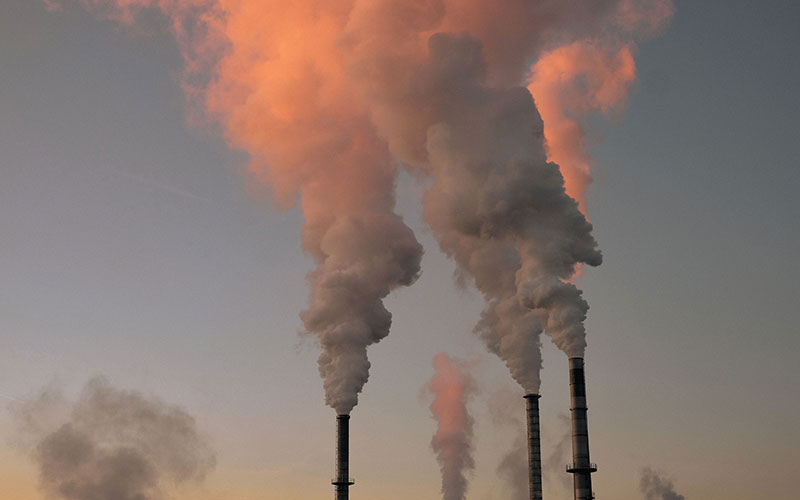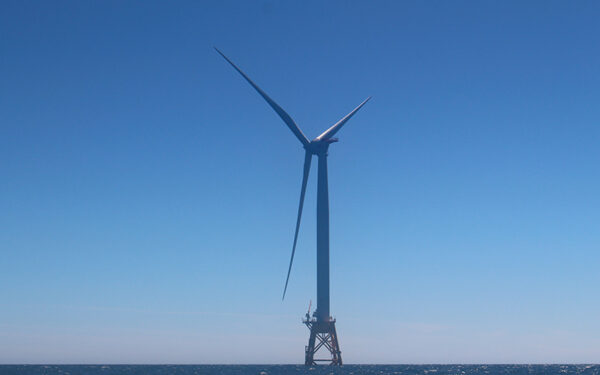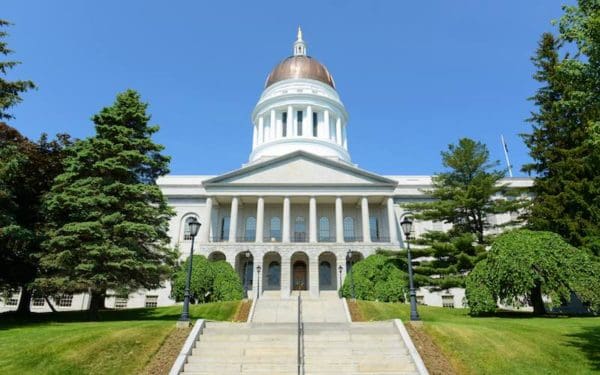
Bioenergy still pollutes the environment with air-and climate-damaging emissions. That's why its application must be limited – and why clean energy like solar and wind should pave the path forward.
Climate change is affecting New England, here and now. From blistering heat that aggravates air pollution and respiratory illnesses to mild winters devoid of the classic snow New England economies depend on – we can see climate impacts in every facet of our lives.
The good news is our region has made its voice clear: We want climate action. That is why nearly every New England state has passed mandatory climate laws and policies to slash polluting emissions, with targets for 2025 all the way to 2050. To slow the crisis, we must end our reliance on fossil fuels.
But as the conversation around our clean energy future progresses, new fuels have entered the field that are purportedly “renewable” and “clean.” These fuels are often called “bioenergy” because they are produced from natural resources and waste. Policymakers are contending with what role these new fuels play in slowing climate change.
CLF answers this question in our new report, developed with Michael J. Walsh, Ph.D, an integrated systems scientist and deep decarbonization planner, and Jonathan S. Krones, Ph.D., an industrial ecologist with expertise in sustainable solid waste systems. Our analysis shows that bioenergy should play only a small, limited role in moving off fossil fuels in industries that are nearly impossible to electrify. However, they are not a one-to-one replacement for fossil fuels – truly clean energy, like solar and wind, must pave our path forward.
What is Bioenergy?
Bioenergy, or biofuels, includes ethanol, biodiesel, biomass, and so-called “renewable” natural gas. These fuels are all energy sources created from organic matter (where the “bio” in “bioenergy” comes from). Those sources include corn, soybeans, wood, sewage sludge, landfill garbage (and the gas it produces), and animal waste.
Bioenergy can help displace fossil fuels in narrow contexts, such as high-heat industrial processes. That’s because the technology to electrify some industrial activities doesn’t currently exist. However, bioenergy isn’t a viable climate solution at scale.
Bioenergy Damages the Climate and the Environment
Proponents of bioenergy call for substituting the gas and diesel that currently power our vehicles and buildings with these fuels. While that may sound good on the surface, all types of bioenergy emit climate-damaging pollution when burned. In fact, “renewable” natural gas is chemically identical to natural gas. And biodiesel? It’s nearly chemically identical to diesel. In other words, same polluting impact, different name.
Bioenergy also emits carbon pollution even before it’s burned. For example, land use and agriculture currently account for a quarter of the emissions warming the climate. Ramping up the use of bioenergy produced by crops and trees would only worsen these sectors’ contribution to climate change.
Not to mention, to produce enough corn, soybeans, and wood for widespread use as bioenergy, we would have to raze natural landscapes for farms – releasing the carbon those landscapes store into the atmosphere. Soybean, corn, and new trees planted for bioenergy farms would store some carbon. But the amount would not make up for what was released when the land was cleared – nor what it held before clearing.
Bioenergy Pollutes Our Air, Harming New Englanders
In addition to spewing climate-warming emissions, bioenergy also pollutes our air. Burning these fuels produces tiny toxic particles, ozone, and nitrogen dioxide. All three can severely irritate respiratory systems, triggering asthma attacks. Breathing in tiny toxic particles can lead to heart attacks, cancer, and premature death in people with lung or heart disease. Nitrogen dioxide and ozone pollution can lead to the development of asthma or other respiratory illnesses. Children and older people are at even more risk from this dangerous pollution.
People of color and low-income communities already bear an unfair burden from air pollution. That’s because racist and classist policies placed highways, power plants, waste incinerators, landfills, and other industrial facilities in their neighborhoods. The more bioenergy we create, the more facilities we’ll need to process crops and waste. That will worsen the harm these communities already suffer.
Bioenergy Encourages More Polluting, Expensive Practices
We cannot make enough bioenergy to replace all fossil fuels. Instead, biodiesel must be mixed with diesel, and “renewable” natural gas with fossil gas. These fuels also will rely on the same leaky pipe infrastructure we use now. Because bioenergy still need to be mixed with fossil fuels, we will only continue our dependence on the very fuels causing our climate crisis. That will make it nearly impossible to meet our climate targets and slow climate change.
Investing in bioenergy will also trigger the production of more polluting waste, like landfill waste or manure. And that would worsen the harmful impacts our waste and agriculture systems have on people and the environment. Rather than turning this waste into energy, we should be working to reduce it altogether. That means adopting zero waste practices to cut the amount of trash sent to landfills. It means introducing more industrial-scale composting programs, like those already taking root in some states. And it means helping our farmers cultivate crops in ways that help our climate and create healthier soils.
Finally, bioenergy is not cheap. In fact, it typically costs far more than its fossil fuel counterparts. Blending bioenergy into fossil fuels could increase New England’s energy costs – significantly impacting lower- and moderate-income households.
New England Must Focus on Solar and Wind
For these reasons, bioenergy is not a viable climate solution across the economy. Some minimal sources of methane, like landfills and anaerobic digesters, could help cut climate-damaging pollution in the hardest-to-electrify industries as we get rid of fossil fuels – if handled properly. But nowhere near enough of this kind of bioenergy exists (or could be generated) to use in homes, most businesses, or cars. These fuels harm the environment, damage the climate, and hurt our health. And they leave us tied down to fossil fuels when we should be moving away from them.
CLF is fighting climate change and securing a livable and healthy future for New England. We don’t have time or resources to waste on costly and ineffective solutions. The economy, environment, and New England’s public health demand that we invest substantially in energy efficiency and clean energy resources while moving with caution on bioenergy.
You can the full story in our report here.



